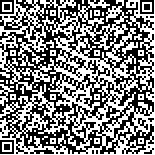| This article has been:Browse 1778Times Download 2612Times |

scan it! |
|
|
| DOI:10.13522/j.cnki.ggps.2019179 |
|
| Calibrating Soil Temperature, Water and Salt Measured Using Capacitive Sensor |
|
YAO Li, WANG Yangren*, WANG Hao, LI Yonglin, FAN Xinrui
|
|
College of Water Conservancy Engineering, Tianjin Agricultural University, Tianjin 300384, China
|
| Abstract: |
| 【Background】Soil water content is important for irrigation and is a parameter for designing automatic irrigation. Traditional method for measuring soil moisture content is soil drying. Although accurate, it was tedious and laborious, unable to provide real-time soil moisture measurement. As a result, numerous alternative methods have been proposed, including neutron probe method,γ-ray transmission method, electromagnetic wave method, electrical resistance method, capacitance method and photoelectric method. Sensors able to simultaneously measure soil moisture, soil electrical conductivity (ECa) and electrical conductivity (ECw) are essential for better managing irrigation water and monitoring and controlling soil salinity.【Objective】The purpose of this paper is to test the accuracy of a capacitive sensor (three-parameter sensor) that can concurrently measure soil moisture, as well as soil electrical conductivity and salinity. The experiment was conducted in pots each packed with 8.86 kg of dry soil 10 cm thick.【Method】The three-parameter sensor used in the experiment was the SMEC 300 model. The experiment was conducted at the water-cycling experiment station at the west campus of Tianjin Agricultural University. We tested three water levels by adding 2.65, 3.25 and 3.80 kg of water to the pots, and four salt levels by adding 0, 20, 70 and 100 to the pots. There were six salinity concentration: 1, 5, 10, 15, 20 and 25 g/L. The sensors were buried 5 cm below the soil surface. During the test the pots were regularly weighed to measure the change in soil moisture content. The electrical conductivity test was conducted in plastic pots, each filled with 8L of water with four sensors in it. Each test lasted 40 minutes. The soil moisture and electrical conductivity measured from the sensors were calibrated against the results directly measured from pot weighting and the pots filled with water only.【Result】The electrical conductivity measured by the sensor increased exponentially with salinity, and their correlation coefficient was higher than 0.92. Soil salinity affected accuracy of the soil moisture measurement and the real moisture was linearly related to soil moisture content and electrically conductivity measured by the sensor at significant level or above, with the correlation coefficient varying from 0.601 9 to 0.940 4. It also found that the calibration parameters varied with individual sensors.【Conclusion】 Calibration parameters of the capacitive sensors are not unique, and thus each sensor should be calibrated individually. Soil salinity affected accuracy of the sensors, and accuracy of the soil moisture measured by the sensor could be improved by including the electrical conductivity measured by it in the calibration. |
| Key words: soil; moisture content; electrical conductivity; capacitive sensor |
|
|